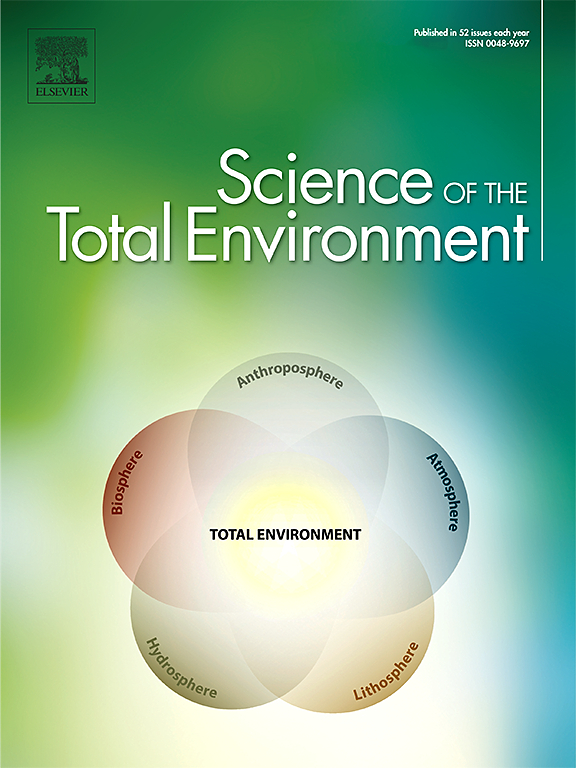Insight into sequestration and release characteristics of uranium(VI) on phlogopite in the presence of humic acid
IF 8.2
1区 环境科学与生态学
Q1 ENVIRONMENTAL SCIENCES
引用次数: 0
Abstract
Knowledge of the sorption speciation and surface configuration of uranium(VI) at the mineral/water interface is essential to construct reliable retention and migration models. However, the ubiquitously existing natural organic substances at U(VI)-contaminated sites readily interact with U(VI) and interfere with the environmental fate of U(VI). In this work, the adsorption behavior and mechanism of U(VI) on phlogopite in the presence of humic acid (HA) were investigated by combining batch experiments, cryogenic time-resolved laser fluorescence spectroscopy (TRLFS), and extended X-ray absorption fine structure (EXAFS) spectroscopy. The batch sorption experiments at different HA concentrations suggested that HA had little effect at pH < 4 but suppressed U(VI) sorption on phlogopite from pH 4 to 12. Fluorescence spectral characteristics indicated the formation of multiple surfaces and aqueous U(VI)-humate species, whose abundances varied with pH. The TRLFS coupled with EXAFS spectra suggested that the HA-U(VI) hybrids preferentially bind to surface sites via U(VI) rather than HA. The humate uranium species increased uranium release and migration risk in the natural environment. These findings elucidate the species characteristics and environmental behavior of U(VI) in the presence of natural humic acid and provide guidance for remediation treatments and safety assessment of uranium-contaminated sites.

洞察腐殖酸存在时铀(VI)在辉绿岩上的封存和释放特性
本文章由计算机程序翻译,如有差异,请以英文原文为准。
求助全文
约1分钟内获得全文
求助全文
来源期刊

Science of the Total Environment
环境科学-环境科学
CiteScore
17.60
自引率
10.20%
发文量
8726
审稿时长
2.4 months
期刊介绍:
The Science of the Total Environment is an international journal dedicated to scientific research on the environment and its interaction with humanity. It covers a wide range of disciplines and seeks to publish innovative, hypothesis-driven, and impactful research that explores the entire environment, including the atmosphere, lithosphere, hydrosphere, biosphere, and anthroposphere.
The journal's updated Aims & Scope emphasizes the importance of interdisciplinary environmental research with broad impact. Priority is given to studies that advance fundamental understanding and explore the interconnectedness of multiple environmental spheres. Field studies are preferred, while laboratory experiments must demonstrate significant methodological advancements or mechanistic insights with direct relevance to the environment.
 求助内容:
求助内容: 应助结果提醒方式:
应助结果提醒方式:


